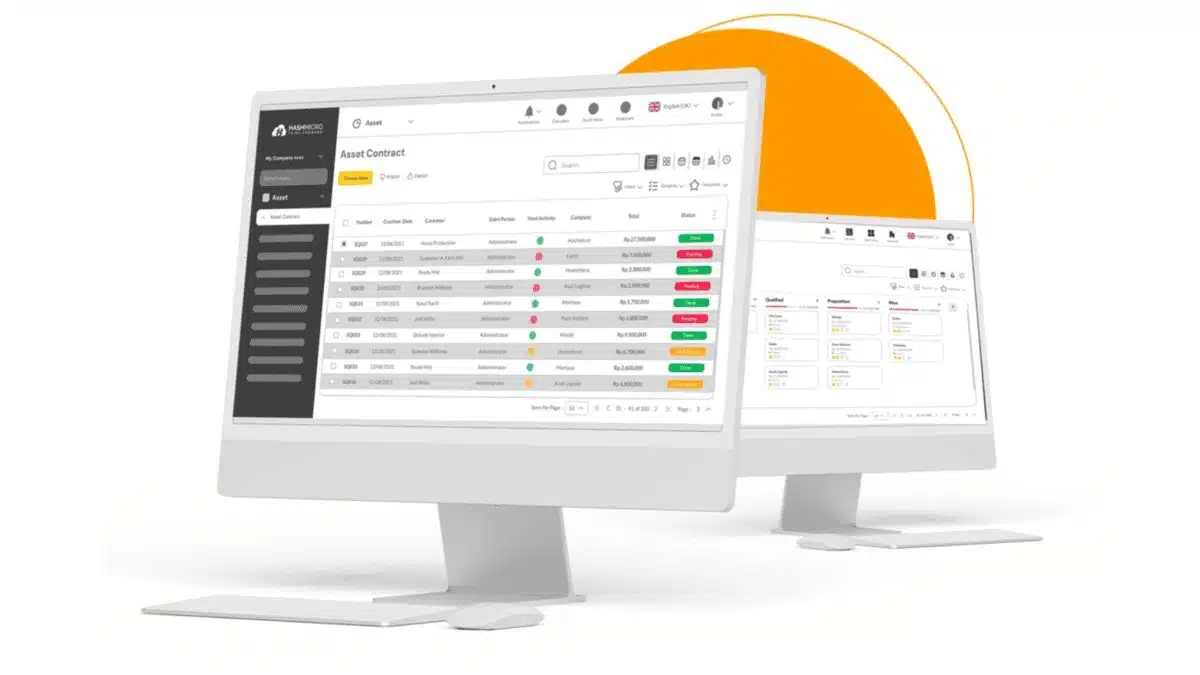Tired of losing track of valuable equipment and spending more on unnecessary repairs? Managing fixed assets without a proper system can lead to kalituhan, mismanagement, and missed opportunities. With fixed asset management, you can streamline tracking and ensure your assets work efficiently.
But what exactly is fixed asset management, and how can it solve these problems? The answer could be the key to transforming how your business handles its most valuable resources. Keep reading to uncover the benefits and why it’s essential for your company’s success!
Key Takeaways
|
Table of Contents
What is Fixed Asset Management?

Fixed assets refer to tangible, long-term investments a business owns and uses in its daily operations. These assets typically include properties, plant and equipment, machinery, furniture, and vehicles.
Unlike current assets, which are short-term and easily converted to cash, fixed assets provide long-term value and are not intended for immediate sale. In the Philippines, fixed assets are vital to businesses as they represent stability and operational capability.
Managing fixed assets requires a comprehensive understanding of their value, expected life span, and usage within the company. This knowledge enables businesses to allocate resources wisely, plan for future needs, and ensure that each asset contributes to profitability.
This knowledge enables businesses to allocate resources wisely and ensure that each asset contributes to profitability. Proper enterprise asset management software also extends to specialized settings, such as educational institutions, where school asset tracking software plays a crucial role in maintaining and optimizing the use of educational assets.
Fixed Assets vs. Current Assets
Current assets differ from fixed assets in that they are expected to be converted into cash within a year. Examples include cash, inventory, and accounts receivable. On the other hand, fixed assets are more permanent investments designed for long-term use in business operations.
Proper differentiation between fixed and current assets ensures businesses can effectively manage liquidity, cash flow, and investments. With fixed asset management, companies optimize long-term resources to maintain operational stability and enhance growth prospects.
Read more: Fixed Assets vs. Current Assets: An In-depth Examination
Importance of Fixed Asset Management
Effective fixed asset management is crucial in running a successful business, providing numerous advantages directly impacting overall performance. Let’s explore how fixed asset management can enhance a company’s profitability and long-term financial health:
Enhancing profitability
Fixed asset management improves profitability by ensuring optimal asset utilization and identifying underperforming or obsolete equipment. For Filipino businesses, maximizing efficiency translates to lower operational costs and increased profit margins, contributing to financial sustainability.
Boosting customer satisfaction and retention
Well-maintained assets ensure product or service quality, directly enhancing customer satisfaction. In the Philippines, where loyalty is vital, proper asset management reduces breakdowns, ensuring smooth operations and fostering long-term client relationships.
Compliance and safety benefits
Proper asset management ensures adherence to local safety and tax regulations, reducing legal liabilities. Maintaining assets in good condition minimizes accidents, enhances compliance, and boosts credibility by demonstrating a commitment to safety standards.
Reducing maintenance and repair costs
Regular maintenance prolongs the life of assets and reduces costly repairs. For Filipino businesses, routine inspections and early issue detection lower unexpected expenses, ensuring efficient operations while promoting sustainable business practices.
Employee engagement and organizational reputation
Effective asset management fosters employee engagement by ensuring a safe working environment and boosting morale and productivity. It also enhances an organization’s reputation, showing a commitment to quality and safety, which attracts potential clients and partners.

Key Features of Fixed Asset Management Systems

Fixed asset management systems provide essential tools for businesses to monitor, track, and manage their assets throughout their life cycles. For Filipino businesses, implementing these systems helps optimize asset usage and supports financial planning, compliance, and decision-making.
Those features are:
- Asset Registration and Logging: Centralizes asset details like type, location, and condition, simplifying tracking and improving data accuracy.
- Tracking Life Cycle Events and Transactions: Monitors assets from acquisition to disposal, helping businesses reduce costs and ensure regulatory compliance.
- Automated Depreciation Calculation: Automates depreciation processes, ensuring tax compliance and financial reporting accuracy.
- Asset Disposal Management: Streamlines asset disposal, ensuring compliance with regulations and supporting better purchasing decisions.
- Dashboard and Reporting Enhancements: Provides real-time insights and customizable reports, enabling data-driven decision-making and strategic planning.
Incorporating these features into a fixed asset management system offers significant advantages. Business owners can efficiently manage assets and maintain regulatory compliance, all while gaining better visibility into their operations. This approach enhances profitability and also supports long-term business sustainability.
Benefits of Implementing Fixed Asset Management Software
Implementing fixed asset management system is a game-changer for businesses looking to streamline their operations and improve decision-making. This technology offers Filipino businesses a wealth of benefits, from enhancing decision-making efficiency to ensuring compliance with local regulations.
Some of the benefits are:
- Decision-Making Efficiency: Provides real-time access to asset data, enabling quicker, more informed decisions that drive business growth.
- Automation of Manual Processes: Automates tasks like data entry and maintenance scheduling, reducing human errors and freeing up staff for strategic activities.
- Eliminating Ghost Assets: Identifies and removes lost or obsolete assets from records, improving financial accuracy and asset utilization.
- Compliance Enhancement: Tracks maintenance and depreciation, helping businesses meet regulatory standards and simplify auditing.
- Gaining Better Business Insights: Offers insights into asset performance, enabling companies to optimize operations, reduce costs, and plan proactively.
By leveraging fixed asset management software, Filipino businesses can enhance operational efficiency, reduce administrative burdens, and ensure compliance. These systems streamline day-to-day processes and support long-term growth by offering valuable insights and improving resource allocation.
Choosing the Right Fixed Asset Management Software
Choosing the right fixed asset management software requires careful consideration of various factors to ensure it aligns with your business needs. Assessing current and future requirements is important, as well as ensuring the chosen software can support growth and integrate seamlessly into existing systems.
Some steps you can take while considering the right asset management software are:
- Assessing Your Asset Management Needs: Evaluate the types of assets, tracking requirements, and complexity of operations to choose software that aligns with your goals and budget.
- Connectivity and Integration Capabilities: Ensure the software integrates smoothly with other systems like accounting and inventory management, allowing for a unified asset management process.
- User Accessibility and Software Scalability: Choose a user-friendly and scalable solution that grows with your business, offering ease of use and necessary employee support.
- Implementation Timeline Considerations: Plan carefully for deployment and training to ensure a smooth transition without disrupting operations, maximizing the software’s benefits.
By considering these key factors, Filipino businesses can select a fixed asset management solution that meets their current needs and supports future growth. With the right software, companies can streamline processes, enhance decision-making, and achieve long-term success.
Manage Fixed Asset Using HashMicro’s Asset Management Software

Managing fixed assets efficiently can significantly enhance business performance and reduce operational costs. With HashMicro’s Asset Management Software, companies gain access to advanced features that streamline the entire asset lifecycle, from tracking to maintenance.
Here’s how the software can transform asset management for Filipino businesses:
- Asset GPS Tracking: Monitor the real-time location of your assets, ensuring better control and security over valuable equipment.
- Repair Order Management: Integrate repair requests with inventory management, allowing for streamlined maintenance workflows and reducing downtime.
- Fully Integrated with Accounting for Depreciation: Automatically track depreciation and sync it with your accounting system for accurate financial reporting and compliance.
- QR Code Scanning for Facilities Requests: Simplify maintenance requests by enabling QR code scanning, improving response times, and efficiently managing facilities and assets.
- Asset Comprehensive Cost Reporting: Generate detailed reports on asset costs, including acquisition, maintenance, and depreciation, to improve financial transparency and planning.
With the vast number of asset management software options available, choosing the right one can be overwhelming. However, HashMicro’s Asset Management Software stands out with its advanced features that empower businesses to improve asset visibility, optimize resource allocation, and ensure smooth operations.
Conclusion
Fixed asset management is a crucial component of maintaining both operational efficiency and long-term profitability for businesses. Companies can reduce costs and improve compliance by streamlining asset tracking, maintenance, and depreciation processes.
Implementing a comprehensive asset management system like HashMicro’s offers significant benefits for Filipino businesses, particularly improving asset visibility and resource allocation. The software helps businesses manage assets more effectively by tracking their entire life cycle and automating key processes.
With the right tools, managing assets becomes much simpler and more efficient, allowing businesses to focus on growth and sustainability. The system allows companies to redirect resources toward other areas of their operations. Schedule a free demo today and try the difference yourself!

Frequently Asked Questions
-
What is meant by fixed asset management?
Fixed asset management involves tracking, maintaining, and optimizing long-term physical assets like equipment and machinery. It helps businesses monitor asset performance, depreciation, and ensure proper usage.
-
What are the three types of fixed assets?
The three types of fixed assets are tangible, intangible, and financial assets. Tangible assets include machinery, intangible assets include patents, and financial assets include investments.
-
Who needs fixed asset management?
Any business with significant long-term physical assets benefits from fixed asset management. It ensures optimal asset usage, reduces costs, and improves financial planning.




































